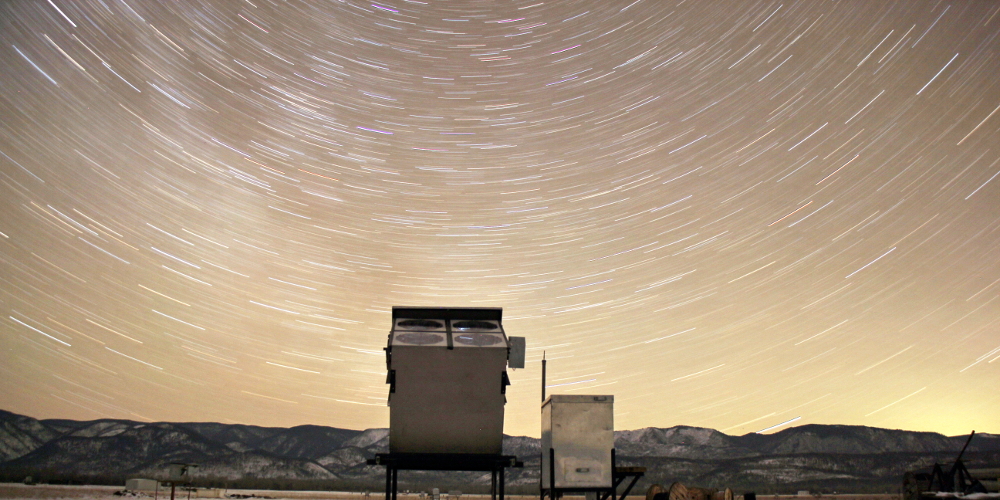TAIGA stands for “Tunka Advanced Instrument for cosmic rays and Gamma Astronomy” and is a complex, hybrid detector system for ground-based gamma-ray astronomy from a few TeV to several PeV, and for cosmic ray studies from 100 TeV to thousands of PeV. TAIGA will search for “Pevatrons” (ultra-high energy gamma-ray sources), which are believed to accelerate cosmic rays to ultra-high energies, and will measure the composition and spectrum of cosmic rays in the transition region from Galactic to Extragalactic origin. TAIGA includes TAIGA-HiSCORE – an array of wide-angle integrating air Cherenkov stations, TAIGA-IACT – an array of Imaging Atmospheric Cherenkov Telescopes, Tunka-133 – an integrating air Cherenkov array and scintillation detectors – TAIGA-Grande and TAIGA-Muon.
This multi-component detector is designed for the study of cosmic and gamma rays across five orders of magnitude in energy and will become one of the main detectors in the TeV to thousands of PeV energy range.
The objectives include:
- study of known local galactic and extragalactic sources of
gamma-rays with energies higher than 2-1013 eV - searching for astrophysical objects accelerating galactic CRs to energies higher than 1015 eV
- searching for new extragalactic sources of gamma rays with energies above 2-1013 eV
- searching for diffuse gamma rays in the energy region above 1014 eV
- study of the energy spectrum and mass composition of CR in the energy region of 1014–1018 eV
- searching for astrophysical nanosecond optical transients
The unique feature of the TAIGA complex is the integration of various types of detectors into a single coherent system.

